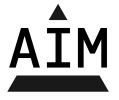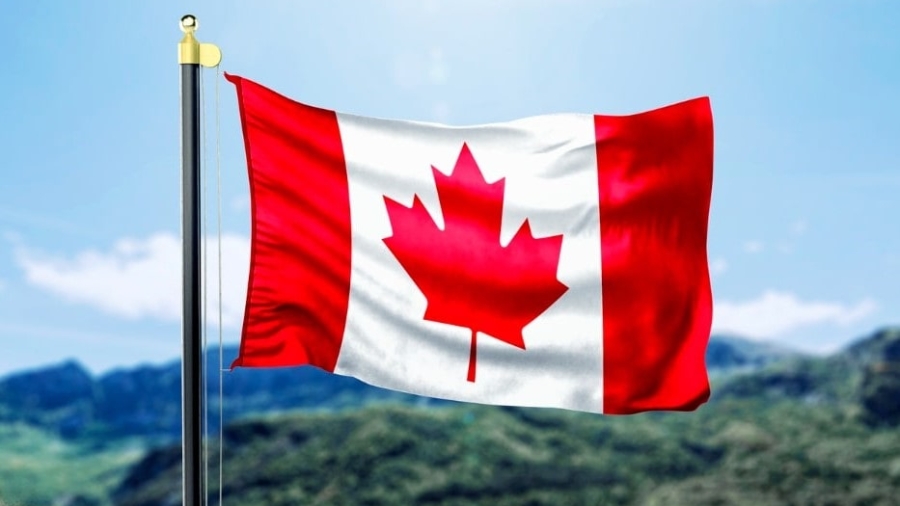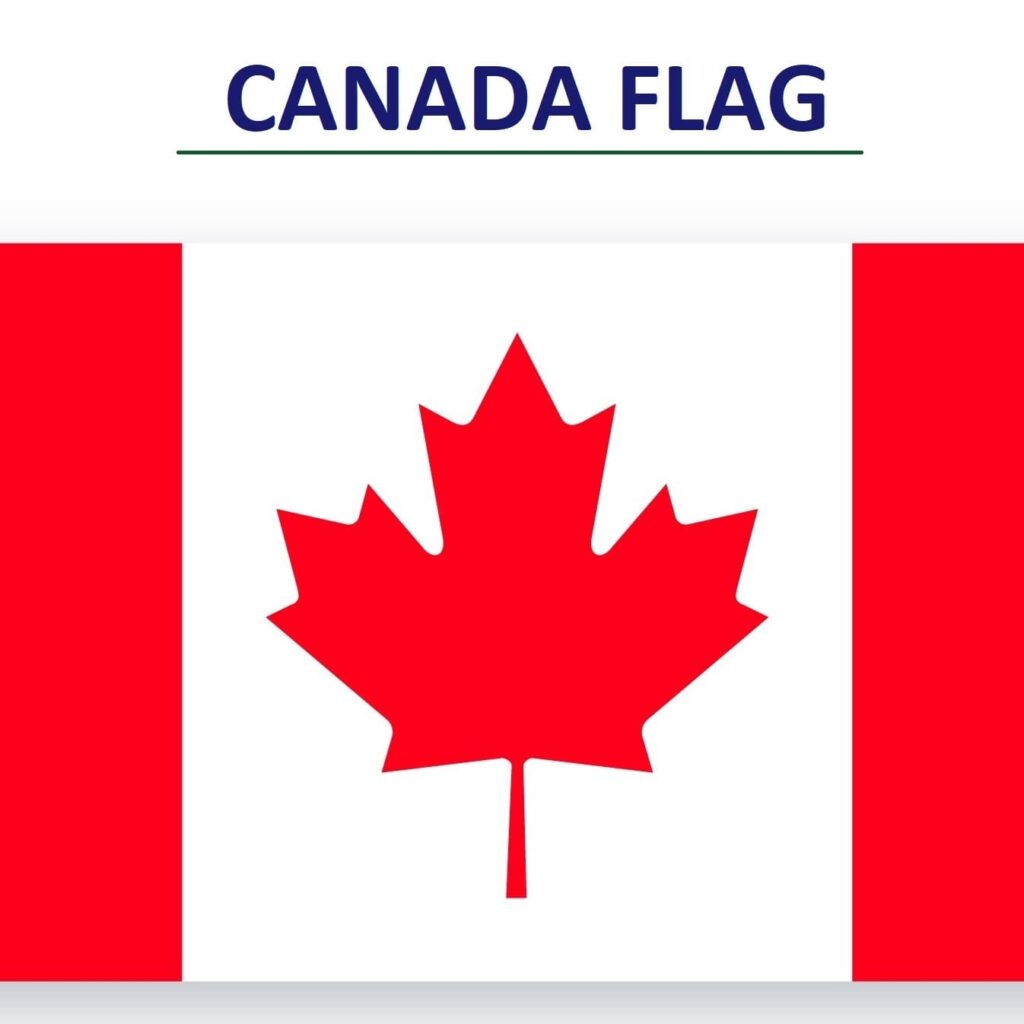
The Canada Flag, often referred to simply as the “Canadian flag” or the “Maple Leaf,” is a distinctive and iconic national flag. Its structure is a simple yet powerful layout:
- The flag consists of two red vertical bands on the left and right sides, which are roughly one-quarter of the flag’s width each.
- In the center of the flag, there is a white square, which takes up half of the flag’s width.
- Inside the white square is a single, red, 11-point maple leaf, known as the “maple leaf emblem.” This leaf is the most prominent feature of the flag and is a symbol of Canada’s natural beauty, historical roots, and unity.
The flag is known for its bold and easily recognizable design, with red and white being the official colors of Canada. It was officially adopted as the National Flag of Canada on February 15, 1965, replacing the “Red Ensign” that had been used previously. The Canadian flag is a powerful symbol of the country’s identity, values, and place in the world.
Table of Contents
- Introduction to Canada Flag
- What is the Maple Leaf?
- History of the Canadian Flag
- Who Designed the Canada Flag?
- Design Elements of the Canada Flag: Unpacking the Maple Leaf’s Symbolism
- Flag Adoption and Unveiling of the Canada Flag
- Symbolism and Meaning of the Canada Flag
- Flag Day Celebrations – National Flag of Canada Day (February 15)
- Interesting Facts about the Canada Flag: Unveiling to Unique Uses
- Flag Etiquette of the Canada Flag: Respect and Tradition
- Stories Behind the Canada Flag: A Tapestry of Pride and Sacrifice
- Flag Variations and Uses: A Tapestry of Symbols in Canada
- Canadian Flag Controversies: Unveiling Unity Amid Disputes
- International Recognition and Influence of the Canada Flag: A Global Emblem
- Impact of Canadian Flag on Tourism: A Symbol of Welcome
- Official Dimensions of The Canada Flag.
- Color Code of The Canada Flag
- Conclusion
- Read More Our Articles on Flags
- FAQs: Canada Flag, Canadian flag, Maple Leaf
Introduction to Canada Flag
National flags hold a special place in the hearts of citizens, serving as symbols of unity, pride, and identity. Among these, the Canadian flag, adorned with its iconic maple leaf, stands out as an emblematic representation of Canada’s rich heritage and natural beauty. The Canadian flag, often referred to as the “Canada Flag,” is a striking symbol that embodies the rich heritage and diversity of this vast nation. In this article, we will explore the significance, history, and symbolism of the Canada Flag, also known as the Maple Leaf, shedding light on why it’s more than just a piece of fabric.
The Significance of National Flags:
National flags are more than just colorful pieces of cloth; they are powerful symbols that represent a country’s history, culture, and values. They instill a sense of pride, identity, and unity among citizens, and they often carry profound meaning and symbolism.
Overview of the Canadian Flag (Canada Flag):
The Canada flag, often referred to simply as the “Canada Flag,” features a striking design: a red field with a single, stylized maple leaf in its center. The simplicity and elegance of this flag make it instantly recognizable on the world stage.
The Canadian Flag, or “Canada Flag,” is a distinctive red-and-white emblem that proudly represents Canada on the global stage. This simple yet striking design consists of a red maple leaf, or “maple leaf,” at its center, flanked by two vertical bands of white.
Significance and Symbolism:
The maple leaf, prominently featured on the Canadian flag, has deep-rooted significance. It symbolizes Canada’s natural beauty, its vast forests, and the importance of the maple tree to the nation’s history and economy. The red color represents the sacrifices made by Canadians in various wars and conflicts.
Understanding the Maple Leaf: The National Flag of Canada:
The red maple leaf is not just a random choice; it’s the exact species of maple leaf that grows in Canada. This attention to detail showcases Canada’s commitment to representing its unique identity accurately.
Brief History of the Canadian Flag:
Before the adoption of the current flag in 1965, Canada used the “Red Ensign” with the Union Jack in the canton. The adoption of the Maple Leaf as the national flag marked a significant moment in Canada’s history, signifying its desire to establish a distinct national identity.
Importance of the Canada Flag:
The Canada Flag serves as a unifying symbol for Canadians. It is proudly displayed on government buildings, schools, and homes across the nation. It’s a reminder of Canada’s commitment to peace, freedom, and diversity.
The Canada Flag is more than just a piece of fabric; it’s a symbol of Canada’s identity, values, and history. Its significance and timeless design continue to unite Canadians and capture the hearts of people worldwide. As you explore Canada, you’ll find the Maple Leaf waving proudly, welcoming you to a country known for its diversity, natural wonders, and warm hospitality.
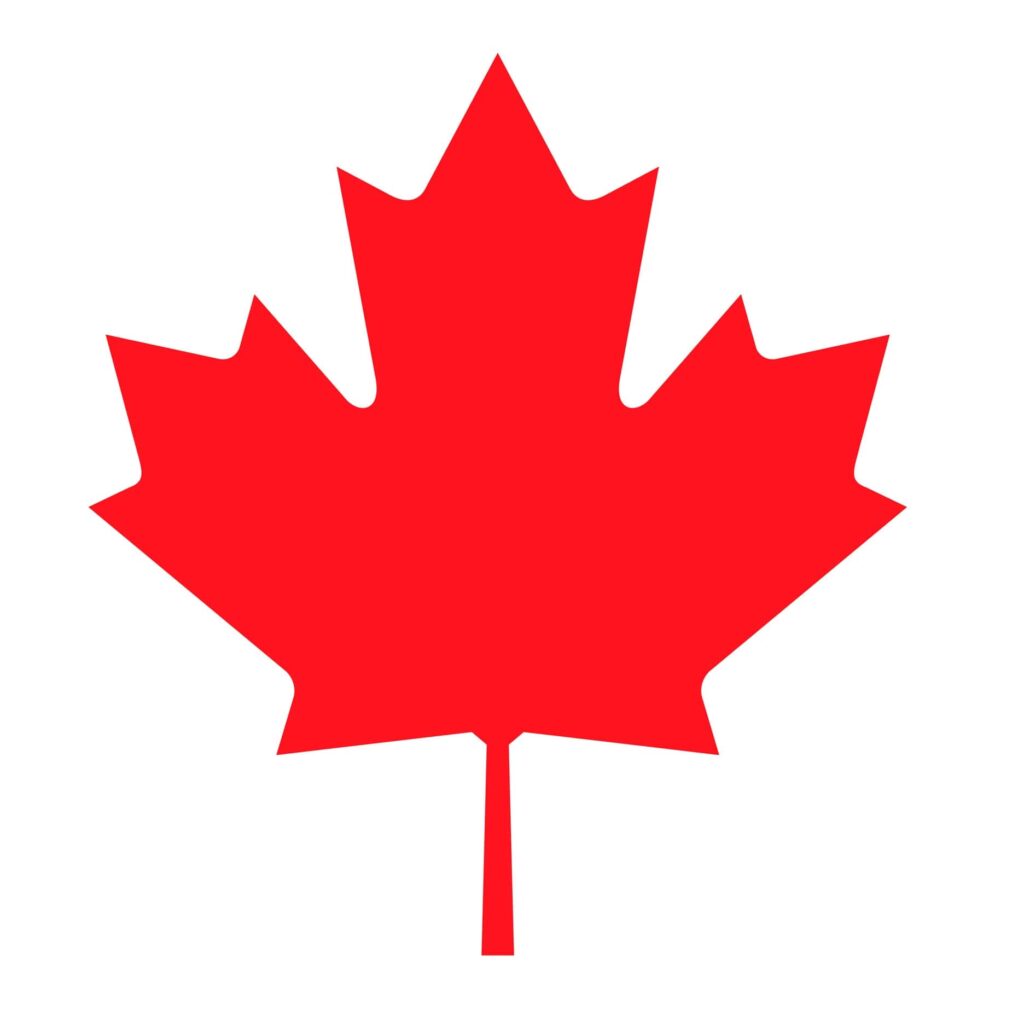
What is the Maple Leaf?
The maple leaf is the leaf of the maple tree, a deciduous tree genus native to various parts of North America, Europe, and Asia. In the context of Canada, the maple leaf is particularly associated with the sugar maple tree (Acer saccharum) and its vibrant red leaves during the autumn season. Here are some key characteristics and associations of the maple leaf:
- Shape: Maple leaves are typically palmate in shape, meaning they have multiple lobes radiating from a central point. The exact shape can vary among different species of maple trees, but they often have a distinctive, recognizable outline.
- Color: In the fall, the leaves of many maple tree species turn various shades of red, orange, or yellow. The brilliant red color of sugar maple leaves, in particular, is iconic and has become strongly associated with Canada.
- Symbolism: The maple leaf has deep cultural and symbolic significance in Canada. It represents the nation’s natural beauty, especially during the spectacular display of red maple leaves in the autumn. The maple leaf is also a symbol of unity, diversity, and peace within Canada.
- Canadian Flag: The maple leaf is prominently featured on the national flag of Canada. The single, stylized red maple leaf at the Centre of a white square is a powerful symbol of Canadian identity and values.
- Maple Syrup: Maple trees, especially sugar maples, are known for their sap, which is used to make maple syrup. Maple syrup production is a significant industry in parts of Canada and the United States.
- National Emblem: In addition to its presence on the flag, the maple leaf is used as a national emblem on various official symbols, coins, and government documents in Canada.
History of the Canadian Flag
Unveiling the Past: The Rich History of the Canadian Flag
The history of the Canada flag is a captivating narrative of Canada’s journey to self-discovery and independence. The adoption of the Maple Leaf flag in 1965 was a watershed moment, symbolizing Canada’s emergence as a distinctive and confident nation on the world stage.
Origins of the Canada Flag
The story of the Canadian flag is a journey through time, reflecting the nation’s evolving identity. It all began with the quest for a distinctive symbol that could represent Canada uniquely on the world stage.
Historical Flags of Canada
Before the Maple Leaf flag, Canada had a series of historical flags. These included the St. George’s Cross, the Fleur-de-lis, and the Union Jack, each marking different periods of the country’s history.
The Mission for a Distinctive Canadian Flag
In the mid-20th century, as Canada grew into an independent nation, the need for a unique flag became increasingly apparent. The existing flags, while historically significant, no longer captured Canada’s evolving identity.
The Need for a Distinct Canadian Flag
The desire for a flag that was distinctly Canadian, free from colonial symbols, became a unifying national sentiment. Canadians sought a symbol that would reflect their values, culture, and aspirations.
The Great Flag Debate of 1964
The quest for a new flag culminated in the historic Great Flag Debate of 1964. It was a passionate and lengthy discussion in the Canadian Parliament, with various designs and proposals put forward.
Pre-1965: Use of the Red Ensign
Leading up to the adoption of the Maple Leaf flag, Canada primarily used the Red Ensign, a flag that combined the Union Jack and the Canadian coat of arms. However, it lacked the distinctiveness that Canada sought.
Adoption of the Maple Leaf Canada Flag
On February 15, 1965, the iconic Canadian flag, featuring the red maple leaf on a white background with red vertical bands, was officially adopted. It was an embodiment of Canada’s identity, a symbol of unity and pride.
The history of the Canada flag is a reflection of the country’s evolution from colonial ties to a distinct and proud nation. The adoption of the maple leaf flag was a momentous step towards asserting Canada’s identity on the world stage. It represents unity, diversity, and the enduring spirit of the Canadian people.
Learn More About: The history of the National Flag of Canada
Who Designed the Canada Flag?
The Canada flag, known as the “Maple Leaf flag” or “l’Unifolié” in French, was designed by George F. G. Stanley and John Matheson. The process of selecting a new flag for Canada began in the early 1960s, as the country sought to replace the “Red Ensign” with a distinctive and representative national flag.
The design of the Canadian flag, often referred to simply as the “Maple Leaf,” was created by George F. G. Stanley and John Matheson.
George F. G. Stanley:
George F. G. Stanley was a historian and public servant, known for his expertise in Canadian military history. He played a crucial role in the design process by suggesting the idea of incorporating a single red maple leaf, an idea he believed would represent Canada’s unique identity effectively.
John Matheson:
John Matheson was a Member of Parliament and a dedicated public servant who served as a member of the multi-party parliamentary committee tasked with selecting a new flag design for Canada. He worked closely with Stanley to bring their vision to life and helped navigate the intricate process of choosing a design that would best represent the nation.
Together, George F. G. Stanley and John Matheson played pivotal roles in the creation of the Canadian flag. Their collaboration and dedication to finding a symbol that would unify the country resulted in the iconic flag we know today, which was officially adopted on February 15, 1965.
Design Elements of the Canada Flag: Unpacking the Maple Leaf’s Symbolism
The Canada flag is not just a striking visual, but a carefully crafted symbol that tells a story. Here, we’ll dive into the intricacies of the Maple Leaf flag’s design, from the symbolism of the iconic maple leaf to the choice of colors and proportions.
Maple Leaf Symbolism
At the heart of the Canadian flag’s design is the maple leaf. This vibrant red leaf represents Canada’s natural beauty, particularly its abundant maple forests. Beyond that, it symbolizes unity, peace, and tolerance – core values that resonate deeply with Canadians.
Color Choices and Their Meanings
The Canada flag’s color palette consists of red and white. Red is a powerful color often associated with courage and valor. In this context, it represents the sacrifices made by Canadians in the pursuit of peace and freedom. White, on the other hand, symbolizes purity and tranquility, reflecting Canada’s commitment to peaceful coexistence.
The Iconic Maple Leaf Design
The maple leaf design is simple yet highly recognizable. Its 11 points are said to represent Canada’s ten provinces and one territory, reinforcing the idea of unity amid diversity. The symmetry and balance of the design evoke a sense of harmony and equilibrium.
Choice of Red and White Colors
The red and white color scheme of the Canada flag has a rich historical context. These colors were drawn from Canada’s colonial heritage, with red representing England and white representing France. Over time, they evolved to symbolize Canada’s unique identity.
Colors and Their Significance
Red and white also hold significance in Canadian history. Red is associated with Canada’s military contributions and sacrifices during conflicts, while white represents the nation’s commitment to peacekeeping and diplomacy on the world stage.
Proportions and Layout
The proportions of the Canada flag are carefully defined. The flag consists of two red vertical bands on the sides, each occupying one-quarter of the flag’s width. The white square with the maple leaf in the center takes up half of the flag’s width. This layout ensures balance and visual appeal.
Comparative Analysis with Other National Flags
When compared to other national flags, the Canada flag stands out for its unique and easily recognizable design. Its simplicity and strong symbolism make it one of the most iconic flags globally.
Flag Adoption and Unveiling of the Canada Flag
The journey to Canada’s iconic Maple Leaf flag was marked by the Great Flag Debate, a passionate national discourse in 1964, where Canadians discussed their collective identity. Then came February 15, 1965, a historic day etched in Canadian memory. On Parliament Hill in Ottawa, under a bright winter sky, the Maple Leaf flag was raised for the first time. Thousands of onlookers witnessed this momentous occasion as Canada’s Prime Minister, Lester B. Pearson, emphasized the flag’s significance in symbolizing Canadian values and identity. It was a powerful declaration of Canada’s autonomy and unity. This day remains a symbol of national pride, reflecting the nation’s commitment to its distinct identity.
The Great Flag Debate
The mission for a distinct Canada flag had been brewing for decades. It came to a head during the Great Flag Debate of 1964. Citizens, politicians, and experts engaged in spirited discussions about the design and symbolism of the new flag. It was a moment when Canada grappled with its identity and sought to break free from colonial symbols.
February 15, 1965: A Historic Moment
After months of deliberation and compromise, 15-02-1965, emerged as a date etched in Canadian history. On this historic day, the Canada flag was officially unveiled on Parliament Hill in Ottawa. Thousands gathered to witness this momentous occasion.
The First Raising of the Maple Leaf Flag
As the wind caught the vibrant red maple leaf, it symbolized a new era for Canada. The flag was raised amid cheers and applause, signifying the nation’s commitment to forging its path and asserting its distinct identity on the world stage.
The flag adoption and unveiling of the Canada flag were milestones that showcased Canada’s determination to carve its identity. The Maple Leaf flag stands as a symbol of unity, diversity, and the enduring spirit of the Canadian people.
Symbolism and Meaning of the Canada Flag
Significance of the Maple Leaf
At the heart of the Canada Flag lies the iconic maple leaf, a symbol that resonates deeply with Canadians. This emblem embodies the nation’s natural beauty, resilience, and the enduring spirit of its people. The maple leaf is not just a leaf; it’s a powerful symbol of identity and unity.
Red and White as National Colors
The choice of red and white in the Canada Flag goes beyond aesthetics. Red symbolizes courage and sacrifice, reflecting Canada’s history of resilience and determination. White, on the other hand, signifies peace and inclusivity, highlighting Canada’s commitment to unity and diversity.
Unity and Inclusivity
The Canada Flag is a symbol of unity and inclusivity. Its design reflects a harmonious coexistence of different cultural backgrounds, with the red and white colors representing the nation’s diverse heritage. It stands as a beacon of acceptance and respect for all Canadians.
Historical Context and Evolution
Understanding the symbolism of the Canada Flag requires exploring its historical context and evolution. It represents a shift from colonial symbols to a distinctly Canadian identity. The adoption of the flag in 1965 marked a pivotal moment in Canada’s journey towards full independence and self-expression.
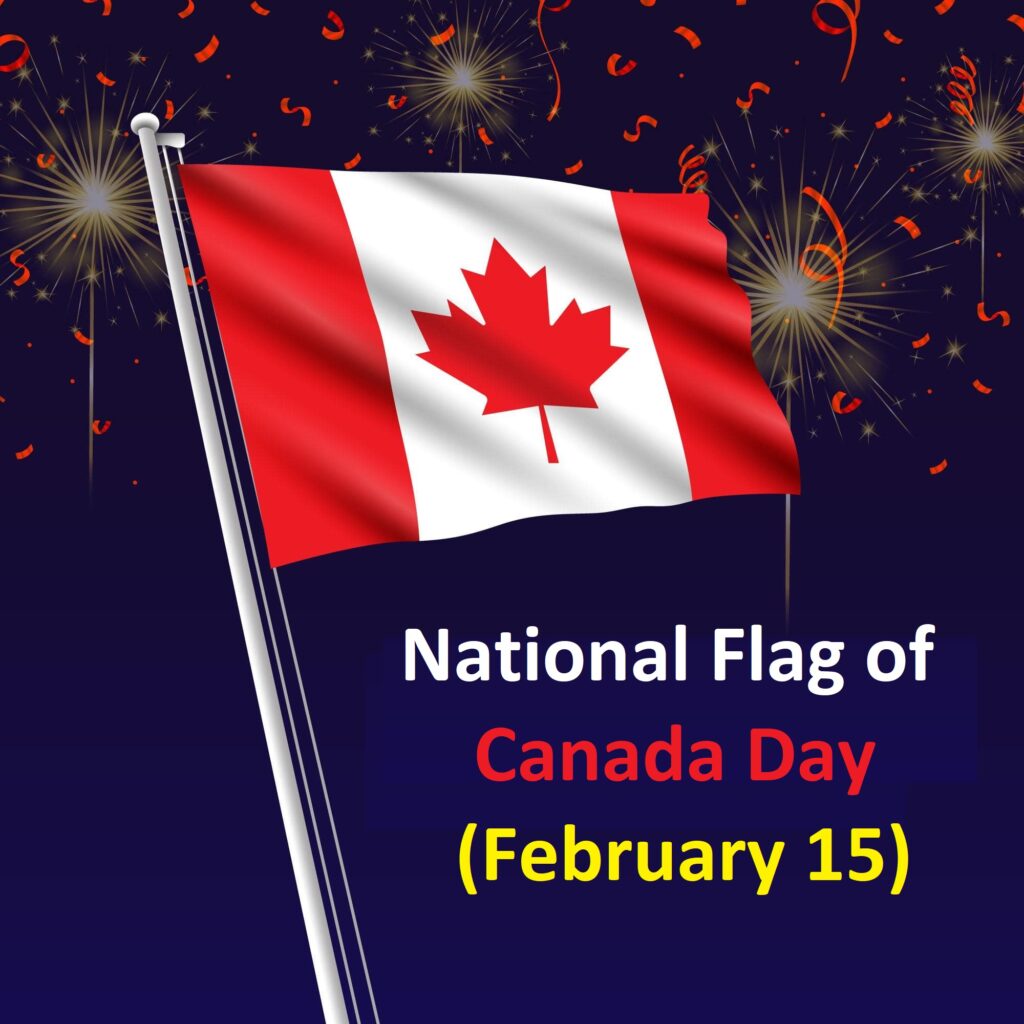
Flag Day Celebrations – National Flag of Canada Day (February 15)
Flag day of Canada is officially called National Flag of Canada Day. Flag Day Celebrations in Canada, observed on February 15th each year, are a vibrant tribute to the beloved maple leaf flag. This special day unites Canadians from all walks of life in a collective display of national pride. Across the country, flag-raising ceremonies take place at schools, government buildings, and public spaces, accompanied by the stirring strains of the national anthem, “O Canada.”
Educational programs help students learn about the history and significance of the flag, instilling a sense of identity and belonging. Communities come alive with parades, exhibitions, and cultural festivals, celebrating Canada’s rich diversity and unity. Canadians proudly fly the flag at their homes and workplaces, transforming the nation into a sea of red and white.
Flag Day is a moment to reflect on the values and freedoms that define Canada and to express gratitude for those who have contributed to its progress. It is a day when the maple leaf truly shines as a symbol of Canada’s past, present, and future.
Interesting Facts about the Canada Flag: Unveiling to Unique Uses
The Canada flag, known as the Maple Leaf, is more than just a national emblem; it’s filled with fascinating facts and history.
Unveiling the Flag: February 15, 1965:
On February 15, 1965, Canada’s iconic flag was officially unveiled, marking a defining moment in the country’s history. It symbolizes Canada’s journey towards self-identity and independence.
The First Canada Flag in Space:
In 1984, the Maple Leaf flag ventured beyond Earth’s atmosphere when astronaut Marc Garneau took it into space. It was the first Canada flag to make its way to the final frontier.
Largest Flag in the World:
Canada proudly holds the record for having the largest national flag in the world. Stretching a whopping 2,780 square meters (29,957 square feet), this colossal flag flies at Parliament Hill in Ottawa.
Variations in Design Over the Years:
While the current design of the Canada flag is well-known, there have been various proposals and designs considered over the years. The flag went through a series of iterations before the iconic red maple leaf on a white field was chosen.
Flag Day Celebrations:
Flag Day, celebrated on February 15th each year, marks the anniversary of the Canadian flag’s adoption. It’s a day when Canadians proudly display their flags and reflect on the country’s heritage and values.
Unique Uses of the Flag:
Apart from flying atop government buildings and being displayed during national events, the Canadian flag has found unique uses. It graces the backpacks of travelers, decorates sports teams’ uniforms, and even serves as a backdrop in countless photos taken by tourists exploring Canada’s breathtaking landscapes.
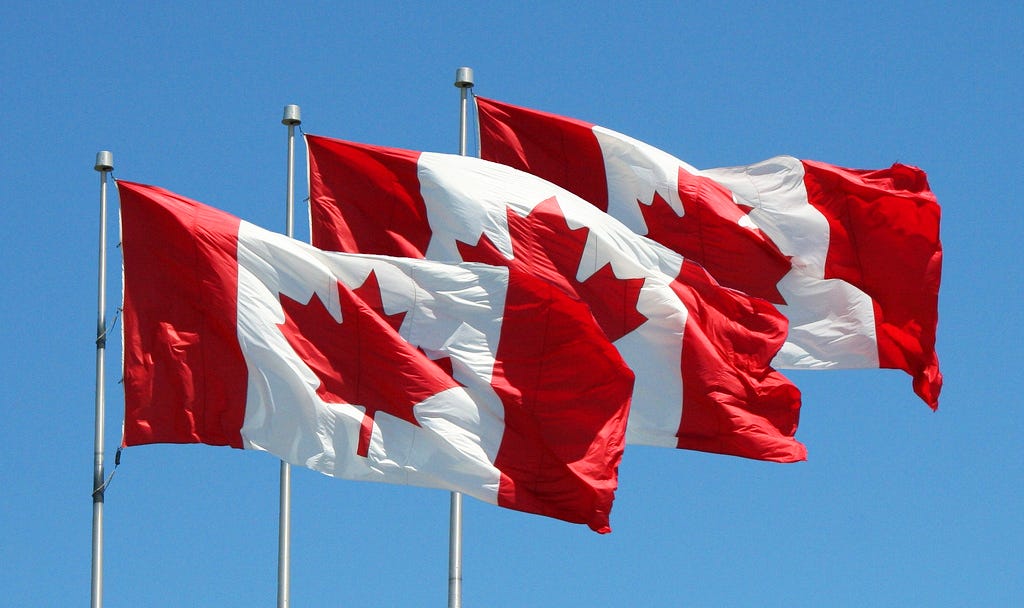
Flag Etiquette of the Canada Flag: Respect and Tradition
The Canada flag, a symbol of pride and identity, commands respect and adherence to certain flag etiquette guidelines.
Flag Etiquette in Canada:
In Canada, displaying the flag with respect is a civic duty. The flag should be treated with dignity, and its display should conform to established protocols.
Proper Display and Handling:
When displaying the Canada flag, it should be flown freely and fully extended, never touching the ground or other objects. It must be raised quickly and lowered ceremoniously.
Times for Half-Staffing:
The flag is flown at half-staff as a sign of mourning during national tragedies or the passing of prominent figures. It should be raised to the peak and then lowered to the mid-point of the flagpole before returning to full staff.
Flag Retirement Ceremonies:
When a Canada flag is no longer fit for display due to wear and tear, it should be retired in a dignified manner. Ceremonies are held to burn or otherwise dispose of old flags, ensuring they are not discarded carelessly.
Cultural Respect and Significance
The Canada flag holds deep cultural significance for Indigenous peoples, and its display should be done with sensitivity and respect for Indigenous traditions and territories.
How to Fold and Store the Canada Flag
When not in use, the flag should be folded neatly. To fold it correctly, bring the two corners of the flag together, then fold it lengthwise twice, forming a narrow rectangle. Proper storage in dry place, ensures the flag remains in good condition.
Flag Repair and Replacement:
If the flag becomes damaged or faded, it should be repaired or replaced promptly to maintain its integrity and symbolism.
Stories Behind the Canada Flag: A Tapestry of Pride and Sacrifice
The Canada flag, known as the Maple Leaf, is not just a symbol; it’s a canvas that tells stories of dedication, sacrifice, and personal connections.
The Story of George F. G. Stanley and John Matheson:
The journey to the Maple Leaf flag began with the collaboration of historian George F. G. Stanley and Member of Parliament John Matheson. Their dedication to creating a unique Canadian symbol led to the flag’s iconic design, with a single red maple leaf on a white field flanked by two vertical red bars. Their story embodies the nation’s quest for identity and unity.
Canadian Veterans and Their Connection to the Flag:
Canadian veterans have a deep and personal connection to the flag. For them, it represents the sacrifices made in the name of freedom and peace. The flag stands as a tribute to their service and a reminder of the importance of upholding the values it symbolizes.
Personal Stories: What the Flag Means to Canadians:
Across Canada, countless individuals have their own personal stories about the Maple Leaf flag. It represents homecoming for those abroad, a sense of belonging for newcomers, and a symbol of hope for future generations. Canadians from all walks of life share their unique stories about what the flag means to them, weaving a tapestry of pride and national identity.
These stories, from the collaborative efforts of Stanley and Matheson to the deeply personal connections of Canadian veterans and citizens, are the threads that make up the rich fabric of the Canadian flag’s history. It’s not just a piece of cloth; it’s a symbol that unites a nation and carries with it the stories and dreams of its people.
Flag Variations and Uses: A Tapestry of Symbols in Canada
Canada’s flag landscape is a vibrant tapestry of symbols, showcasing its rich cultural diversity and heritage.
Provincial and Territorial Flags in Canada:
Beyond the national Maple Leaf flag, Canada boasts a colorful array of provincial and territorial flags. Each province and territory have its unique design, often reflecting regional identity and natural beauty. These flags serve as symbols of local pride and unity, adding depth to Canada’s visual tapestry.
Indigenous Flags and Their Significance:
Indigenous communities in Canada also have their flags, each representing distinct nations, languages, and cultures. These flags are potent symbols of Indigenous resilience and heritage. They reflect the importance of recognizing and honoring the land’s original inhabitants.
Canada Day: Celebrating with the Maple Leaf: Canada Day, celebrated on July 1st, is a day when the Maple Leaf flag takes centerstage. Canadians from coast to coast proudly display the flag, celebrating their shared identity and values. The Maple Leaf becomes a unifying symbol during this nationwide celebration, bringing communities together in a sea of red and white.
Controversies and Debates of the Canada Flag:
Canadian Flag Controversies: Unveiling Unity Amid Disputes
The adoption of the Canadian flag in 1965, often referred to as the Maple Leaf flag, was not without its share of controversies and ongoing debates that have shaped Canadian society.
Opposition to the New Flag in 1965:
When the decision was made to replace the “Red Ensign” with the new Maple Leaf flag, it sparked strong opposition, particularly from those who felt a deep attachment to the old flag. The transition wasn’t without its challenges, and it took time for some Canadians to fully embrace the new emblem.
Regional and Political Disputes:
Canada’s regional diversity and political differences have also influenced flag-related disputes. Some provinces and territories have their own distinct flags, leading to discussions about their place alongside the national flag. Additionally, the flag has been the backdrop for political debates and discussions within the Canadian Parliament.
Contemporary Debates on the Flag:
Even today, debates and discussions continue regarding the Canada flag. Topics include its representation of Indigenous peoples, its place in reconciliation efforts, and its use in various contexts, such as sports events and international diplomacy. These debates reflect evolving societal values and perspectives.
Impact on Canadian Society:
The flag’s controversies and debates have left a lasting impact on Canadian society. They have encouraged discussions on identity, unity, and what it means to be Canadian. The Maple Leaf flag has evolved to symbolize not only the nation but also the ongoing dialogue about Canadian values and inclusivity.
The Canada flag has been a symbol of unity and identity, but its adoption and use have not been immune to controversies and debates. These discussions are an integral part of the nation’s history, reflecting the diverse perspectives and values that make Canada a dynamic and evolving society.

International Recognition and Influence of the Canada Flag: A Global Emblem
The Canada flag, with its striking red maple leaf on a white field, has earned recognition and wielded influence well beyond Canada’s borders.
Recognition by Other Countries:
The Maple Leaf flag is globally recognized as a symbol of Canada. It is proudly displayed in diplomatic missions, international organizations, and events worldwide. This recognition underscores Canada’s standing as a respected nation on the global stage.
Influence on Provincial and Territorial Flags:
The design of the national flag has also influenced the flags of Canada’s provinces and territories. Many regional flags incorporate the iconic maple leaf or draw inspiration from the national flag’s color scheme, creating a visual thread that connects the nation’s diverse regions.
Canada’s Global Image:
The Maple Leaf flag contributes significantly to Canada’s global image. It represents values such as peace, diversity, and inclusivity. When displayed in international forums or worn by Canadian athletes at global sporting events, it reinforces the nation’s commitment to these principles.
Instances of the Flag’s Representation Abroad:
The Canada flag is frequently seen abroad, serving as a symbol of Canada’s presence and values. It adorns Canadian embassies, consulates, and military missions, signifying the nation’s diplomatic and humanitarian efforts worldwide. Additionally, international travelers proudly display the flag on backpacks, showcasing their Canadian identity wherever they go.
The Canadian flag’s international recognition and influence extend far beyond its home country. It serves as a powerful symbol of Canada’s values, unity, and positive global contributions, making it a significant emblem on the world stage.

Impact of Canadian Flag on Tourism: A Symbol of Welcome
The Canada flag, with its distinctive red maple leaf, has become an integral part of Canada’s tourism landscape, leaving a lasting impact on travelers from around the world.
Tourism Campaigns Featuring the Flag:
The Maple Leaf flag often takes centerstage in Canada’s tourism campaigns. It serves as a warm and inviting symbol, extending a welcome to visitors. Tourism brochures, advertisements, and websites prominently feature the flag, inviting travelers to explore the country’s natural beauty, diverse culture, and unique experiences.
Iconic Landmarks Associated with the Flag:
Several iconic Canadian landmarks are closely associated with the flag. The flag is proudly displayed at Parliament Hill in Ottawa, atop the CN Tower in Toronto, and on the Stanley Park Totem Poles in Vancouver, among many others. These landmarks serve as popular attractions, drawing visitors who want to capture a piece of Canada’s identity through the lens of the flag.
Souvenirs and Merchandise:
The Maple Leaf flag also finds its way into an array of souvenirs and merchandise. From t-shirts and hats to keychains and magnets, travelers can take home a piece of Canadian pride. These souvenirs serve as cherished mementos, reminding visitors of their Canadian adventures and welcoming them to return. The Canadian flag has a significant impact on tourism by symbolizing the warm welcome and diverse experiences that Canada offers. It adorns promotional materials, iconic landmarks, and countless souvenirs, inviting travelers to explore the beauty and culture of this vast and welcoming nation.
Official Dimensions of The Canada Flag.
The official dimensions of the Canadian flag, often referred to as the “Maple Leaf,” are carefully defined to ensure its proper display and proportions. The flag’s design features a single red maple leaf with two red bars on a white background. Here are the official dimensions:
- Width: The width of the Canadian flag is twice its height, resulting in a width-to-height ratio of 1:2.
- Length of the Maple Leaf: The maple leaf itself, which is centred on the flag, has a width that is 11/15 of the flag’s width.
- Length of the Flag: The length of the flag is therefore 1.5 times the width of the maple leaf.
For detailed specifications and precise measurements, you can refer to the official Government of Canada website, which provides comprehensive information about the Canadian flag, including its dimensions and correct proportions.
Color Code of The Canada Flag
The hex color code of the Canadian flag, which features red and white, is as follows:
- Red: The red used in the Canadian flag has a hex color code of #FF0000. This is a pure and vibrant shade of red that represents Canada’s history and sacrifice, symbolizing the valor of its military and the nation’s courage.
- White: The white in the flag corresponds to the absence of color, and it is represented by the hex color code #FFFFFF. White symbolizes peace and tranquility, as well as Canada’s commitment to diplomacy and peaceful coexistence.
These hex color codes are commonly used in digital and graphic design to replicate the precise colors of the Canadian flag, ensuring accurate representation in various contexts, including online graphics, print materials, and digital displays.
Conclusion
As we unfurl the final pages of this journey through the Canada flag’s history and significance, it becomes clear that the red maple leaf is far more than a mere emblem; it’s a powerful symbol that encapsulates Canada’s rich tapestry of history, diversity, and values. From its origins to the controversies it stirred, from its impact on tourism to its recognition on the global stage, the Canada flag has been a steadfast companion in the nation’s journey.
The Maple Leaf flag is an enduring symbol of unity, inclusivity, and pride for Canadians from coast to coast. It represents a nation that values diversity, cherishes its heritage, and strives for peace and prosperity on the global stage.
But our exploration doesn’t end here. The Canada flag invites further appreciation and exploration. It’s a reminder of the beautiful landscapes, rich culture, and warm hospitality that Canada offers to both its residents and visitors. So, whether you’re a proud Canadian or a curious traveler, take a moment to pause and admire the Maple Leaf flying high. Respect its symbolism and the values it represents.
In closing, the Canada flag is not just an emblem; it’s a reflection of a nation’s spirit. It’s an invitation to explore, appreciate, and respect the incredible country it represents. Share your thoughts and insights about what the Canada flag means to you, for it is in these personal stories that the flag’s true significance shines brightest. Together, let’s celebrate the enduring symbol that unites us all under the red maple leaf – the beloved Canadian flag.
Read More Our Articles on Flags
FAQs: Canada Flag, Canadian flag, Maple Leaf
1. What is the significance of a national flag?
Ans: A national flag is a symbol that represents a country’s identity, values, and history. It is a foundation of national pride and unity.
2. What is the Canadian flag called?
Ans: The Canadian flag is often referred to simply as the “Canadian flag” or the “Maple Leaf.”
3. What is the official name of the Canada flag?
Ans: The official name of the Canada flag is the “National Flag of Canada.”
4. When was the Canadian flag adopted?
Ans: The Canadian flag was officially adopted on February 15, 1965.
5. Who designed the Canadian flag?
Ans: The Canadian flag was designed by George F. G. Stanley and John Matheson.
6. What is the symbolism of the maple leaf on the Canadian flag?
Ans: The maple leaf symbolizes Canada’s natural beauty, historical roots, and its emergence as an independent nation.
7. Why was the maple leaf chosen for the Canadian flag?
Ans: The maple leaf was chosen for its deep historical and cultural significance to Canada.
8. How many points does the maple leaf on the Canadian flag have?
Ans: The maple leaf on the Canadian flag has 11 points.
9. What do the 11 points of the maple leaf represent?
Ans: Each of the 11 points represents one of Canada’s provinces and territories.
10. What are the flag’s official dimensions?
Ans: The Canadian flag has a width-to-height ratio of 1:2, with the width of the maple leaf being 11/15 of the flag’s width.
11. What are the official colors of the Canadian flag?
Ans: The official colors of the Canadian flag are red and white.
12. What do the colors red and white symbolize on the Canadian flag?
Ans: Red represents Canada’s history and sacrifice, while white symbolizes peace and tranquillity.
13. How is Flag Day celebrated in Canada?
Ans: Flag Day, celebrated on February 15th, involves flag-raising ceremonies, educational programs, community events, and patriotic displays of the Canadian flag.
14. What is the history of the Canadian flag prior to 1965?
Ans: Before 1965, Canada used the Red Ensign as its flag, which featured the Union Jack in the corner.
15. Were there any controversies surrounding the adoption of the Canadian flag in 1965?
Ans: Yes, there was a significant debate known as the “Great Flag Debate” in 1964, which sparked political and regional disputes.
16. How has the Canadian flag influenced provincial and territorial flags in Canada?
Ans: The Canadian flag has inspired many provincial and territorial flags, often incorporating elements of the maple leaf.
17. How does the Canadian flag impact tourism?
Ans: The Canadian flag plays a significant role in tourism campaigns, is associated with iconic landmarks, and is featured on a variety of souvenirs and merchandise.
18. What are some unique uses of the Canadian flag?
Ans: The Canadian flag has been used in various unique ways, including being flown in space and displayed on the world’s largest flagpole.
19. What is the significance of the Canadian flag in international recognition?
Ans: The Canadian flag is recognized worldwide, representing Canada’s values and contributing to its global image.
20. Are there any rules for the proper display and handling of the Canada flag?
Ans: Yes, there are flag etiquette guidelines in Canada, including rules for half-staffing, flag retirement ceremonies, and cultural respect.
21. How is the Canadian flag related to the evolution of Canadian identity?
Ans: The Canadian flag has played a pivotal role in defining and reflecting Canada’s evolving national identity.
22. What are some personal stories and anecdotes related to the Canadian flag?
Ans: Many Canadian veterans and citizens have personal stories about what the flag means to them.
23. Are there variations of the Canadian flag, such as provincial and territorial flags?
Ans: Yes, Canada has provincial and territorial flags, each with its unique design and symbolism.
24. What is the role of the Canadian flag in Canada Day celebrations?
Ans: The Canadian flag is prominently featured in Canada Day celebrations, symbolizing the nation’s birthday.
25. How can individuals show respect for the Canadian flag, and where can they learn more?
People can demonstrate respect by following flag etiquette and can learn more about the flag’s history and significance through educational resources and official government websites.
26. What are some interesting facts about the Canadian flag?
Facts include its unveiling date, being the first Canadian flag in space, and more.
27. How do Canadians celebrate Flag Day?
Ans: Canadians celebrate with flag-themed clothing, educational activities, ceremonies, and parades.
